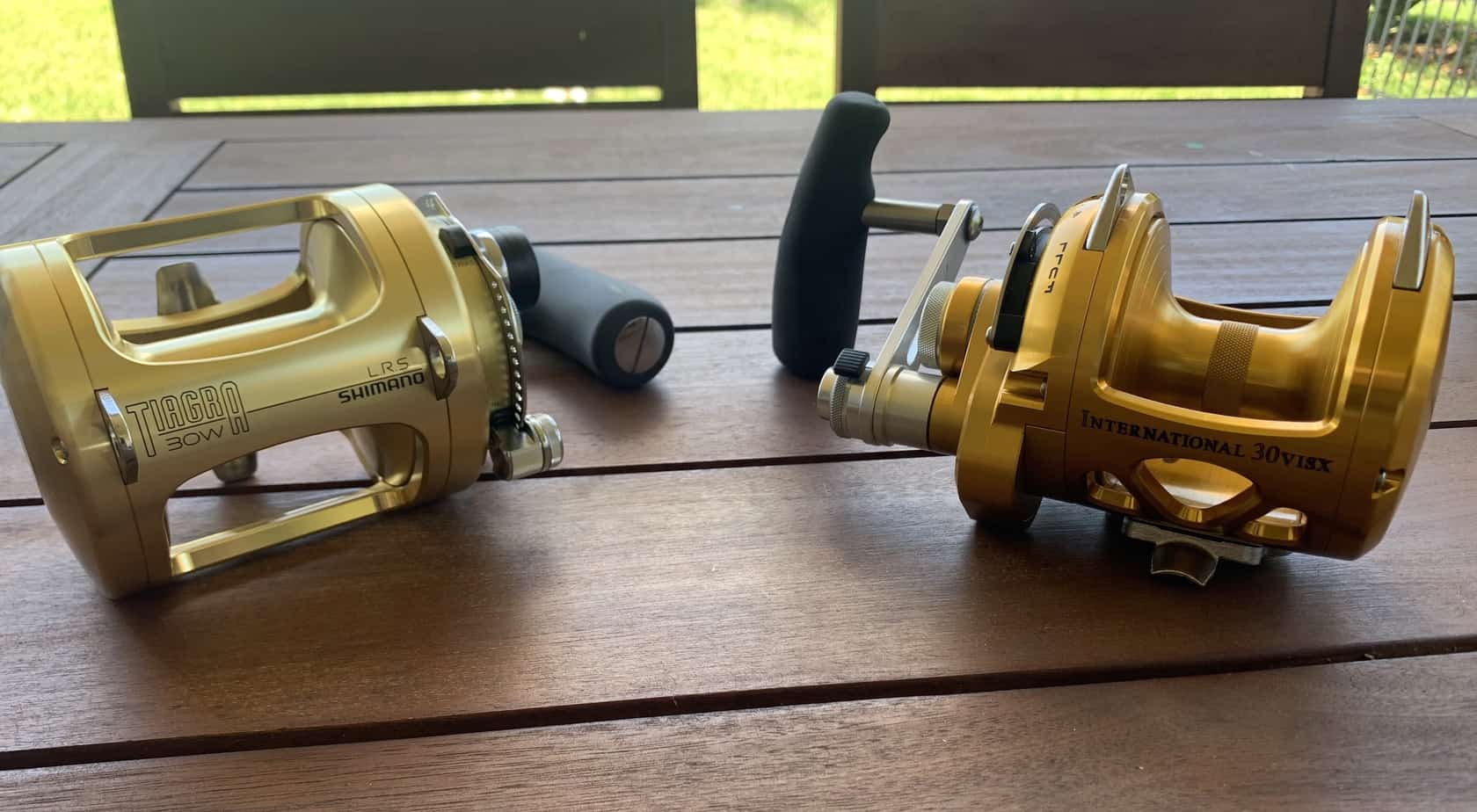I will have to warn you that this is going to be a detailed post. I’m an engineer, so it’s in my nature to be dig in and figure out how something works and what qualities make a product better. In this article, I have nailed down the best trolling reel by comparing the specs and design choices of the Penn International VI to the Shimano Tiagra A.
Spoiler alert: I have completely convinced myself that the Penn International VI is the better reel.
Both of these reels have a long history of performance and are made by well known manufacturers. They have both gone through design revisions to improve upon the initial designs. When I’m looking for a trolling reel, I’m looking for something that will stand the test of time, potentially long enough to pass down to my children after I’ve used it for decades (and properly maintained it). These two reels are also commonly used by charter captains and lifelong anglers due to their great reputations.
In the end, I purchased the Penn International VI trolling reel due to its long pedigree of usage, superior warranty, shielded ball bearings for a saltwater environment, smoother anti-reverse, lower weight, and higher line capacity. I also knew I wanted a narrow reel to make the manual levelwinding easier. I do mostly nearshore trolling in my 21 ft Robalo center console boat, so I was debating between the 16VISX and the 20VISX models. I ended up choosing the 16VISX to outfit my boat as the 16 is smaller and my wife and kids frequently fish with me. It can handle most of the species I see off the East Coast of Florida. Although the 20 might have be able to handle larger fish offshore better, I will rarely do that kind of fishing in my 21 ft boat. I figure I can always upgrade to the 30 when I get a bigger boat.
Another great thing about Penn International trolling reels is they can be great heirloom pieces to pass down to your kids, and if you ever want to sell them to upgrade to a larger size, they hold their value really well. Once you’ve settled on your reel selection, read our article “MUST HAVE SPOONS for Trolling Jigging and Casting!” to find out which spoons you should also pick up.
Trolling Reels Explained
It’s important to understand that trolling reels are not designed for casting. Trolling reels lack a braking system, which makes bird nesting a very realistic occurrence on every cast. These types of reels are designed for heavier line and higher line capacity, to allow the line to troll a long ways behind the boat and just about as deep as you want. A trolling reel can be used for casting in a pinch, but it is not ideal.
Also, trolling reels typically have a lever drag system. Lever drag systems, instead of star drag systems, are used on larger conventional reels such as the Shimano Tiagra and the Penn International VI for a couple of different reasons. In a lever drag system, the drag washer is directly against the side of the spool. In a star drag system, the drag washers and friction plate stacks are on the main drive train, so they’re smaller than the diameter of the spool.
Star drag systems used in baitcasting reels create a lot of heat and can wear out sooner as a result. Lever drag systems create more friction, equating to more drag, because of the larger surface area. The higher drag makes them ideal for targeting large pelagic fish. The larger surface area on the drag washers also helps with heat dissipation, letting the washers resist warping over time.
You’ll also notice that these heavy duty trolling reels are often two speeds. This is because history has shown that sometimes a gear ratio of a 3.1:1 isn’t enough to get the power you need for big offshore fish. But when retrieving such a long line, a lower gear ratio like 1.3:1 is too slow to do without electrics. In comes two speed trolling reels. Once you hook a fish, switch to low gear by simply pushing a button for the fight and turn the knob to move back to high gear. Both the Penn International VI and the Shimano Tiagra are two speed reels.
There is no levelwind on these two trolling reels, and its missing from most other lever drag reels. Levelwinds can be a source of failure during the fight a big fish and have cost anglers their biggest catch before. Instead, these reels are designed to be manually levelwound by the thumb of the angler during the retrieve.
In the subsections below, I’ll go through a comparison of the Tiagra and the International specs. The comparison is based on the data in the table below. I’ve selected similar size 50’s for the purpose of comparing apples to apples.
| Reel | Retrieve Rate in/turn (High/Low) | Braid Capacity (yds/lbs) | Max Drag at Strike (lbs) | Max Drag at Full (lbs) | Weight (oz) | Bearing Count | Gear Ratio (High/Low) | Price |
| Shimano Tiagra (TI50WA) | 37/15 | 1235/100 | 28.5 | 37.5 | 86.3 | 4 | 3.1:1/1.3:1 | $739.99 |
| Penn International (INT50VISW) | 40/15 | 1810/100 | 28 | 45 | 67 | 5 | 3.5:1/1.3:1 | $729.95 |
Shimano Tiagra A vs Penn International VI
Anti-Reverse Systems:
The anti-reverse system on a reel is what stops the handle and spool from moving in the backwards direction. On conventional lever drag reels, the design of an anti-reverse system usually involves pawls (aka dogs) which dig into the teeth of a ratchet to stop movement when the handle is turned counter clockwise, or when a fish strikes during the retrieve. Both the Shimano Tiagra and the Penn International VI have a double dog ratchet system for redundancy. Only one pawl is really necessary to perform the anti-reverse function, but redundancy in this area when you’re likely dealing with hard hitting, big fish, is a good design decision.
In systems such as this, you may notice some backplay in the handle with fewer teeth on the ratchet. The Penn International VI has far more teeth in the ratchet which makes for noticeably less backplay in the handle. I’ve tested this on both the Tiagra and the International, and can confirm I notice more backwards movement on the Tiagra. There is an advantage to fewer teeth in the anti-reverse ratchet. Similar to reel gearing, fewer teeth means stronger teeth. A ratchet with fewer teeth can resist deformation better when fighting the hook set of a monster fish. If you will routinely be putting your reel to the test with the size of fish you’re targeting, you may lean towards the Tiagra. If more backplay in the handle feels sloppy to you, you’ll lean towards the International.
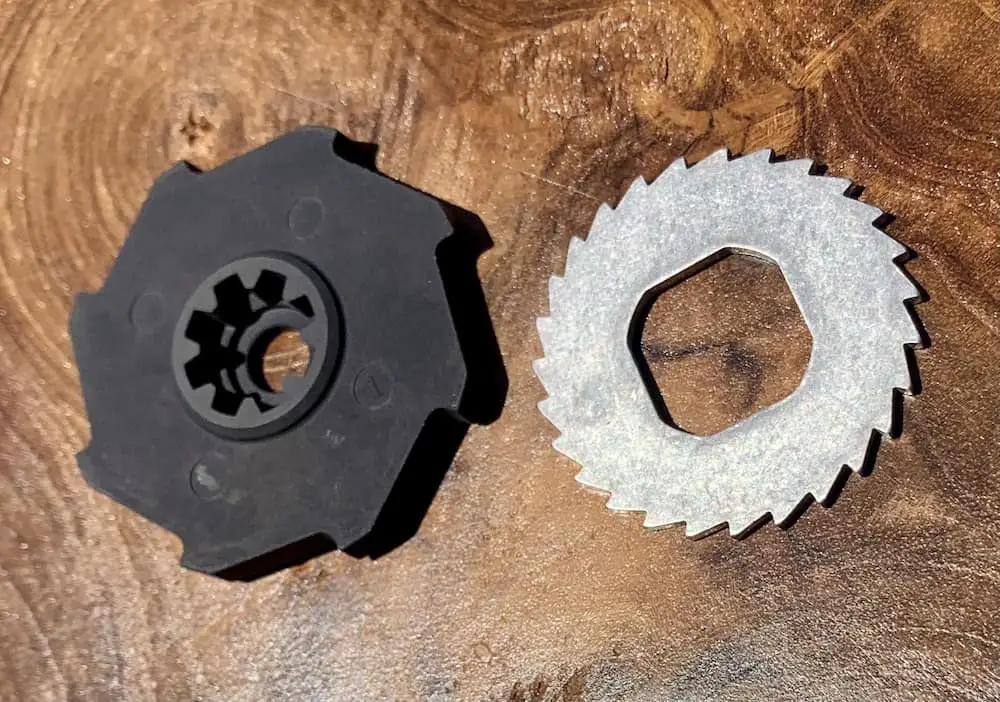
Size & Weight:
A direct size comparison between the two size 50 wide reels is interesting. The Tiagra is over a pound heavier than the International VI. A comparison of the schematics helps to explain why. The Tiagra has the anti-reverse system and the drag washers and plates on the non-handle side of the reel. The frame and non-handle sideplate of the Tiagra need to be bulkier to support those components.
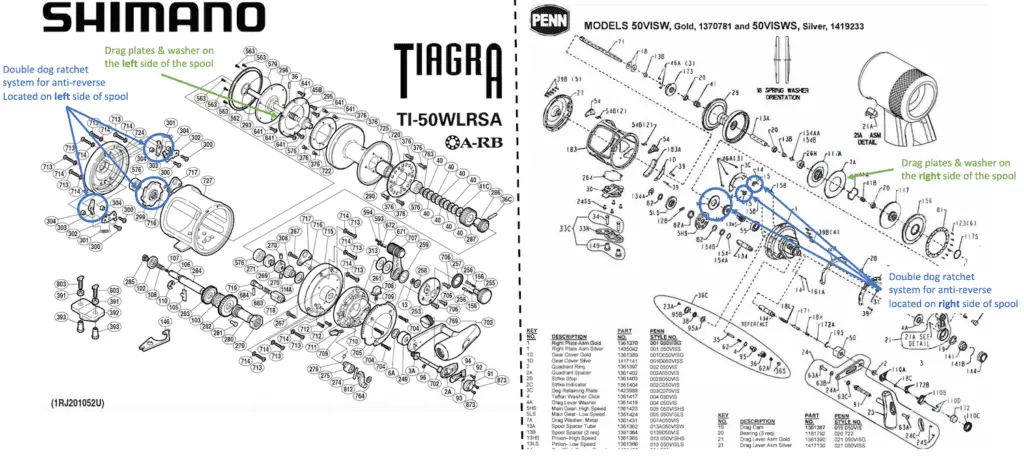
After holding both reels, I can also tell that the handle on the Tiagra is significantly heavier than the International. This seems to help balance the weight of the Tiagra and helps to make retrieval feel easier.
Although the Tiagra is clearly bigger and heavier, this isn’t necessarily a bad thing for the buyer. If you’re a larger person, or plan to fight the fish while the reel sits in a rod holder, the size might not be a deciding factor for you. On the flip side, if you have kids that will be handling this reel, or maybe a petite lady angler, the size might play a larger role in your decision.
Lever Drag Systems:
The max drag at full is 37.5 lbs for the Tiagra 50WA and 45 lbs for the Penn International 50VISW. Penn International gives you nearly 8 more pounds of drag. The drag at strike is nearly identical at 28 lbs and 28.5 lbs. To get these max drag numbers, you would have to also have your preset drag knob dialed up to the max. Most of the time, you’ll be using the strike setting, but there is an advantage to having a larger range between strike and full. When you’re at the end of a fight and trying to get a fish to the gaff, the Penn International has a larger range to increase the drag from strike to full. The last thing you want is to lose a fish right at the boat.
To adjust the drag range, pull the lever all the way down into freespool, then turn the preset drag adjustment knob to increase or decrease and then push it back to strike. The strike point is what you’ll most often keep your drag lever at as the strike point is intended for hookups. If needed when fighting a fish, you can push the lever forward to the full setting to get a little more drag.
The strike drag setting should be 25-30% of the breaking strength of your line. If the reel is new or you’re new to trolling, I highly recommend using a digital scale to measure your drag setting. Usually max/full drag setting is used as a last ditch effort to land a fighting fish, or to pull it to the boat and into the gaff. The drag adjustment knob allows the angler to change the range of the drag to fit the target species.
Each of these reels has a different mechanism to push the lever past strike. The Tiagra has a push button in the lever track that needs to be pushed down while the lever is pushed past it. This is hard for me to do with only one hand. The Penn International VI has a button on the end of the lever, which feels easier for me to do.
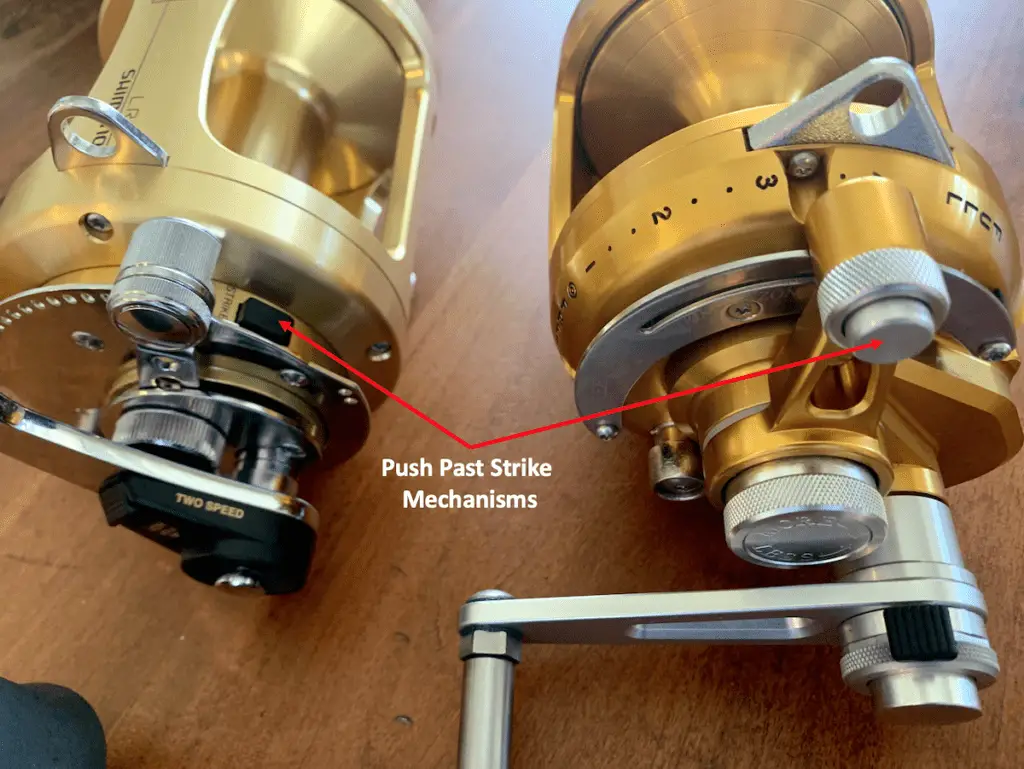
Also, the Penn International VI has a variable strike setting, which lets you increase or decrease the range of drag between strike and full.
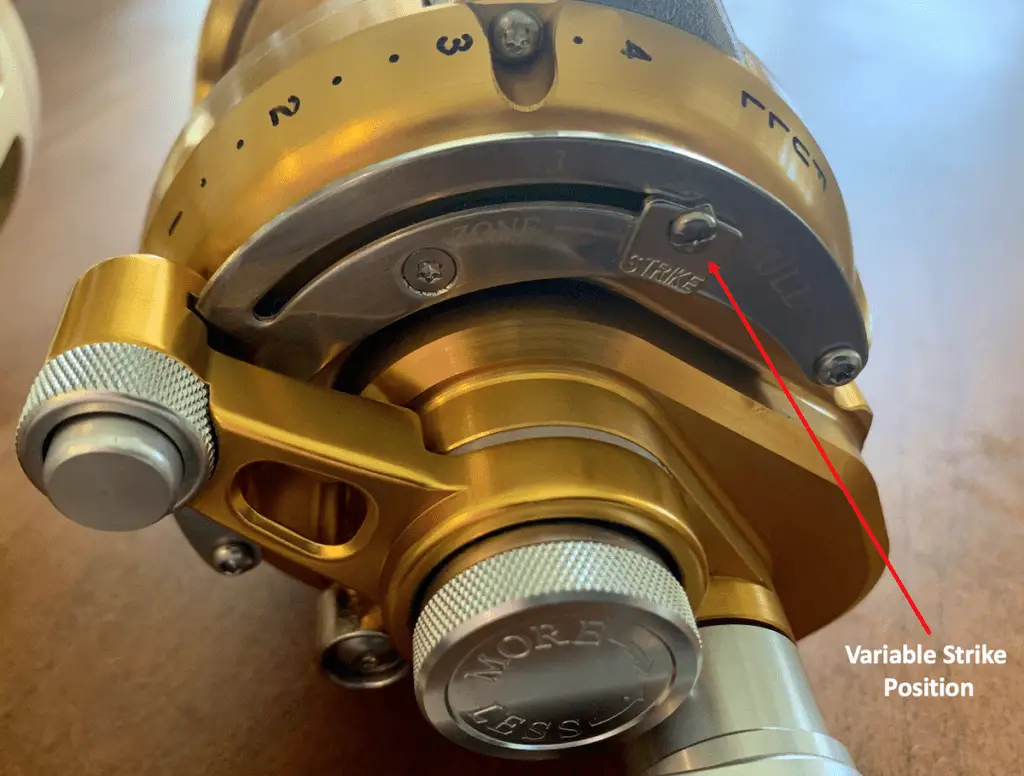
Remember to always put the drag lever back to freespool when you’re done fishing for the day. If they’re left in the strike position, the drag capability will wear down faster because the Belleville washers which act as the spring between the drag plate and spool will become too comfortable being under pressure.
If you’re looking to learn more about star drag reels, read our article LowPro and Round Baitcasters for the Surf – Why You Need Both!
Ball Bearings
The Shimano Tiagra has Anti-Rust Bearings (ARB) which are made with a corrosion resistant coating. This helps keep the saltwater from damaging your reel bearings. However, Shimano does use Shielded Anti-Rust Bearings (SARB) in the Talica lever drag reel. The shield offers another layer of protection from the elements to ensure smooth operation of the bearings. Shimano’s Talica is another lever drag reel they offer that is quite a bit more expensive ($400 more for the 50 size) and includes the SARB bearings. Keep in mind that Shimano’s warranty policy specifically states that “bearings are not covered under warranty”. There are 4 of them in the Shimano Tiagra, well placed on either side of the spool, a drag bearing, and a pinion support bearing.
You could theoretically upgrade your Tiagra’s bearings to SARB bearings of the same size if you like the idea of tinkering with your reel. I was able to find the stock Tiagra ARB bearings (all 4 are the same part number) on eReplacementparts, an authorized Shimano parts provider, for about 16 bucks.
The Penn International VI has 5 bearings, two on the spool, one pinion support and two on the drag system. The Penn International VI has 3 different bearing part numbers and all three bearings are shielded providing additional corrosion resistance when compared to non-shielded bearings. The Penn International VI bearings are more similar to the bearings used in the much more expensive Shimano Talica. Also, Penn’s warranty statement does not say anything to omit coverage of bearings. In the bearing category, Penn International VI’s clearly come out ahead.
I was able to get one part number from eReplacementparts and two part numbers from Mystic Reel Parts (formerly known as Scott’s Bait & Tackle), both of which are Penn authorized reel part vendors. From my perspective, if I’m spending $700+ on a reel with the hopes that it’ll last me a lifetime, I’m getting the one with shielded bearings.
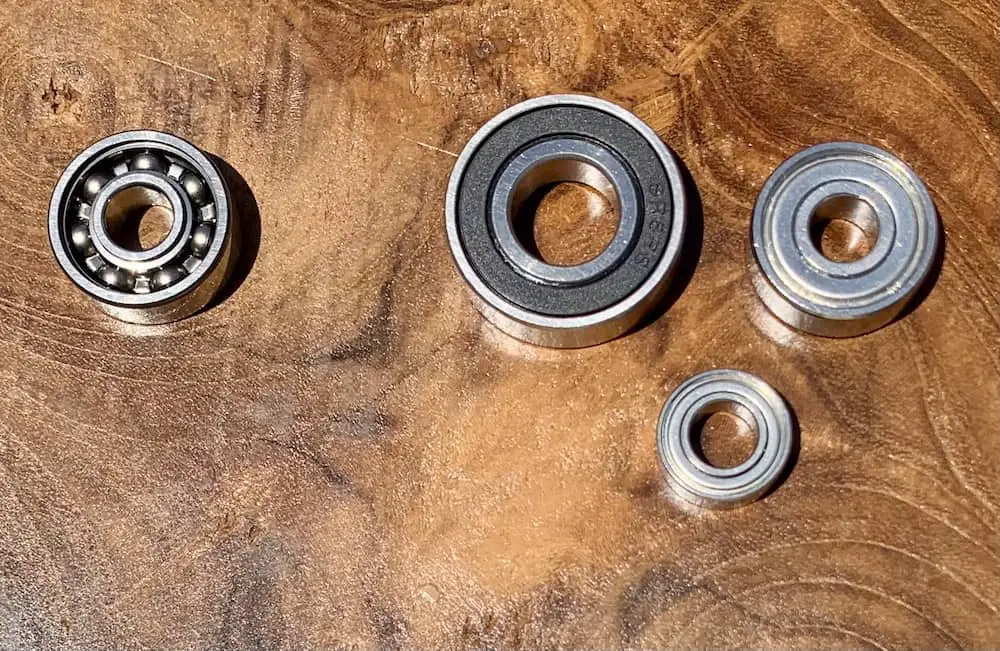
Line Capacity:
Penn International VI’s have a much smaller spool diameter, giving the angler much more line capacity. When comparing 100 lb braid capacity, the Tiagra holds 1235 yards and the International holds 1810 yards. The International clearly wins the battle if you’re looking for more line capacity. Both 1235 and 1810 yards will be enough for the majority of trolling applications, but some people would rather have the extra line to avoid the possibility of ever getting spooled. It’s unlikely to get spooled though, even if you’re not watching the rods since both have loud clickers you’ll hear when a fish strikes. Sometimes you might forget to put the clicker in the “on” position and in that scenario, you’ll probably be happy to have the extra capacity. It’s safe to say, the Penn International VI beats the Tiagra in line capacity.
Warranty:
Penn warranty: Penn warrants its products free from manufacturing defects for 1 year from the date of purchase. If something goes wrong which wouldn’t be classified as a manufacturing defect, Penn would charge a fair fee and perform the repair.
Shimano has the same duration of warranty which covers non-conformances in the product. The warranty is good for one year from the date of purchase, and you must include your receipt for proof of date of purchase. Similar to Penn, if something goes wrong that’s not covered under warranty, Shimano would perform the repair for the proper cost. There is one notable statement on Shimano’s warranty policy, and that is “bearings are not covered under warranty”.
Servicing:
One of the primary reasons this article limits the discussion to Penn International VI and Shimano Tiagra reels is because of the pedigree of these reels. The Penn International lever drag reel was first introduced in 1966 and the latest VI model was introduced in 2017. The Shimano Tiagra was first introduced in 1993. These two brands are also huge in the industry and some advantages come with the size and history of the manufacturer.
For example, if you need to get your reel serviced, there are several authorized reel service providers in across the country. This means you can get your reel serviced in a variety of places and you won’t have to be without your reel for too long. Authorized service providers will also use authentic Shimano and Penn parts, to ensure you don’t get counterfeit or cheap alternative parts put in if something needs replacement. Rest assured, your drag washers or ball bearings will be replaced with the same product that the reel was initially designed with.
When it comes time to service your reel, you can ship it back to Penn or Shimano factory service centers, or use any of these service centers authorized by their respective manufacturer.
Penn Fishing US Reel service centers: https://www.pennfishing.com/pages/warranty-returns#us-service-centers
Shimano Reel service centers: https://fishshop.shimano.com/pages/service-centers
What Size Reel to Buy:
Once you figure out which reel you’re interested in buying, getting the right size for your application is the next step. The table below shows the different sizes and models offered in the Penn International VI series and the Shimano Tiagra series as well as the target species and recommended line sizes. These are suggestions and you can certainly use the reels for more or less, it just wouldn’t be the ideal set up.
As far as the different model numbers, you’ll need to understand what each one means. For Penn International, the VI models are single speed and cheaper, the VIS models are two speeds, VISW is two speed and wide, and the VISX is topless, narrower reel, built for braided line with heavier drag range and steeper drag curve. For the Shimano Tiagra, the A indicates that it's the latest version of the Tiagra, W means wide, LRS means Long Range Special built for use with braided line and has a higher drag curve. All models of the Tiagra are two speeds. Penn International VIS is comparable to Shimano Tiagra A, Penn International VISW is comparable to Shimano Tiagra WA, and Penn International VISX is somewhat comparable to Shimano Tiagra WLRSA (except Tiagra is wide and Penn is not). You will also see an additional “S” sometimes at the end of the Penn International model number to indicate the silver color.
| Penn/Shimano | Model | Max Drag at Strike | Max Drag at Full | Max Recommended Line | Likely Line Strength | Target Application |
| Penn International | 12 VI | 6 | 15 | 20 lb | 20 or less | Light Trolling |
| Penn International | 12 VISX | 24 | 40 | 80 lb | 20-30 | Light Trolling |
| Shimano Tiagra | 16 A | 22 | 29.5 | 80 lb | 20-60 | Inshore & nearshore trolling, shorter troll line |
| Penn International | 16 VIS | 15 | 20 | 50 lb | 20-60 | Inshore & nearshore trolling, shorter troll line |
| Penn International | 16 VISX | 30 | 45 | 100 lb | 20-60 | Inshore & nearshore trolling, shorter troll line |
| Shimano Tiagra | 20 A | 30 | 36 | 100 lb | 20-80 | Inshore & nearshore trolling, shorter troll line |
| Penn International | 20 VISX | 34 | 50 | 100 lb | 20-80 | Inshore & nearshore trolling, shorter troll line |
| Shimano Tiagra | 30 A | 25 | 34 | 100 lb | 40-100 | Nearshore trolling longer troll line, or offshore trolling for medium sized fish |
| Penn International | 30 VISW | 23 | 30 | 80 lb | 40-100 | Nearshore trolling longer troll line, or offshore trolling for medium sized fish |
| Shimano Tiagra | 30 WLRSA | 25 | 34 | 100 lb | 40-100 | Nearshore trolling longer troll line, or offshore trolling for medium sized fish |
| Penn International | 30 VISX | 38 | 55 | 150 lb | 40-100 | Nearshore trolling longer troll line, or offshore trolling for medium sized fish |
| Shimano Tiagra | 50 A | 28.5 | 37.5 | 100 lb | 60-100 | tuna, shark, wahoo, other large fish, and High Speed Trolling (HST) |
| Shimano Tiagra | 50 WA | 28.5 | 37.5 | 100 lb | 60-100 | tuna, shark, wahoo, other large fish, and High Speed Trolling (HST) |
| Penn International | 50 VISW | 28 | 45 | 100 lb | 60-100 | tuna, shark, wahoo, other large fish, and High Speed Trolling (HST) |
| Shimano Tiagra | 50 WLRSA | 35 | 44 | 100 lb | 60-100 | tuna, shark, wahoo, other large fish, and High Speed Trolling (HST) |
| Penn International | 50 VISX | 44 | 60 | 150 lb | 60-150 | tuna, shark, wahoo, other large fish, and High Speed Trolling (HST) |
| Penn International | 70 VIS | 35 | 55 | 100 lb | 60-100 | tuna, shark, wahoo, other large fish, and High Speed Trolling (HST) |
| Shimano Tiagra | 80 WA | 35 | 44 | 100 lb | 60-100 | Marlin trolling |
| Penn International | 80 VISW | 40 | 65 | 150 lb | 80-150 | Marlin trolling |
| Shimano Tiagra | 130 A | 79 | 99 | 300 lb | 100-250 | Shark, big tuna trolling |
| Penn International | 130 VIS | 80 | 100 | 300 lb | 100-250 | Shark, big tuna trolling |
That about wraps up everything you need to know about the Penn International VI and the Shimano Tiagra A trolling reels. I hope this helps you decide between the two. While you’re here, check out our article on Inshore Trolling (How To PLUS Must Have Lures)! Tight lines, y’all.
Recent Posts
Fat Cow Jig Strips: The Ultimate Bucktail Jig Upgrade for Surf Fishing
As discussed in my previous article, "Surf Fishing with Bucktail Jigs: Ultimate Guide for Beach Anglers," bucktail jigs are a staple in any surf angler's tackle box, offering a versatile way to catch...
In my previous article, "Surf Fishing with Bucktail Jigs: Ultimate Guide for Beach Anglers," I introduced you to the bucktail jig and discussed how versatile of a lure it is for catching a wide range...

